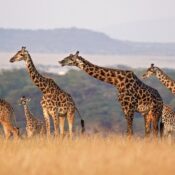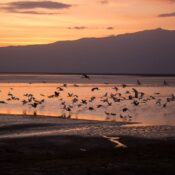The Fascinating History of Majestic Mount Kilimanjaro
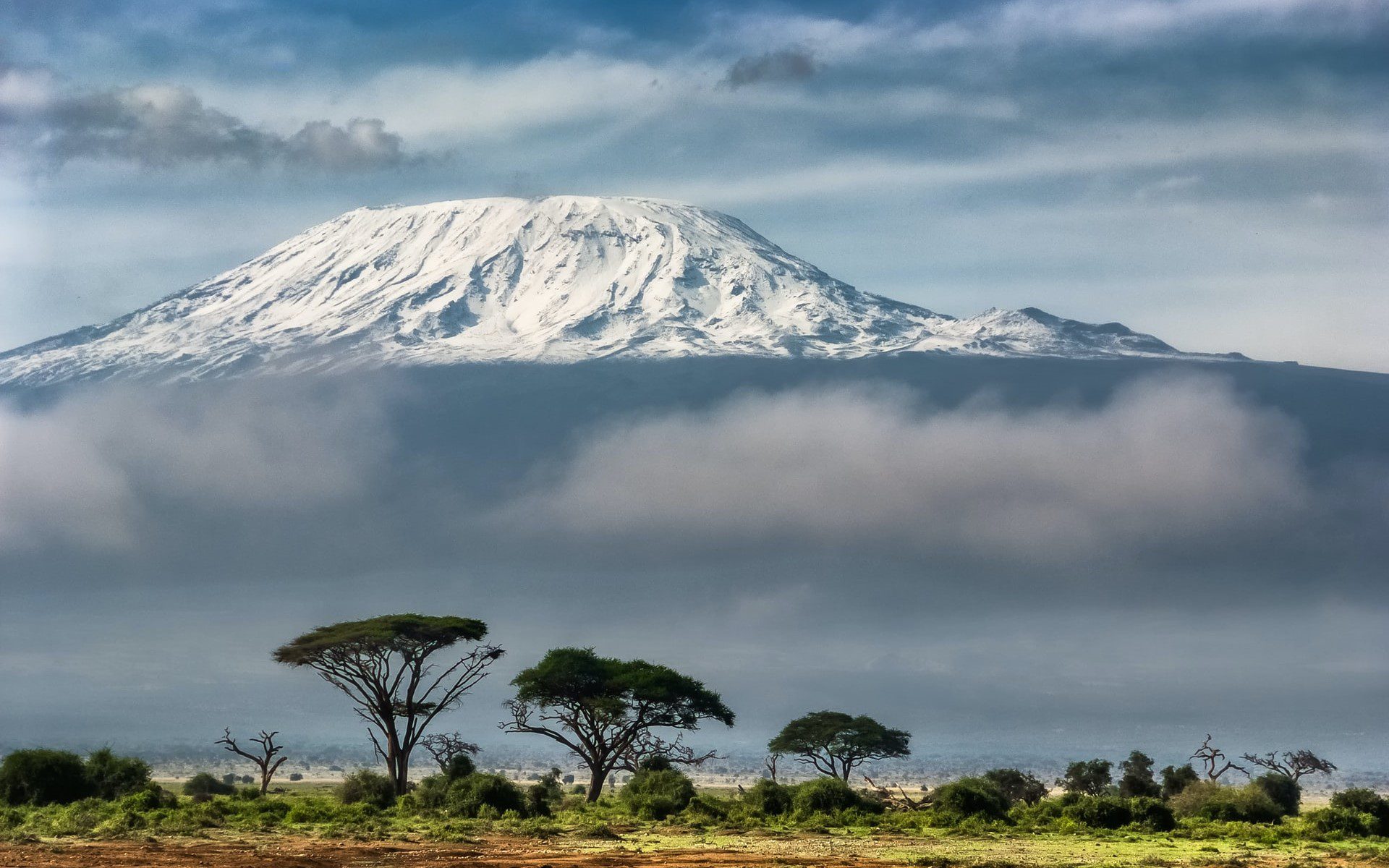
The Fascinating History of Majestic Mount Kilimanjaro
Rising dramatically from the Tanzanian plains, Mount Kilimanjaro has captivated explorers, scientists, and adventurers for centuries. This dormant volcano—Africa’s tallest peak at 5,895 meters—holds a rich geological and cultural history that adds to its legendary status.
Kilimanjaro’s formation began nearly 750,000 years ago from violent volcanic eruptions. Its three cones—Kibo, Mawenzi, and Shira—were created by successive lava flows, with Kibo remaining the highest and only snow-capped summit. Ancient tribes, including the Chagga people, revered the mountain as a sacred site, weaving myths around its glaciers and calling it “Njaro” (Shining Mountain).
European explorers initially dismissed early reports of a snow-capped peak near the equator. However, in 1848, German missionary Johannes Rebmann confirmed Kilimanjaro’s existence, sparking global fascination. The first recorded summit came in 1889 when German geographer Hans Meyer and Austrian climber Ludwig Purtscheller reached Uhuru Peak after multiple attempts.
Today, Kilimanjaro stands as one of the world’s most sought-after trekking destinations, drawing over 30,000 climbers annually. Its receding glaciers—projected to disappear within decades—serve as a stark reminder of climate change. Yet, the mountain’s allure remains timeless, offering adventurers a chance to walk through rainforests, alpine meadows, and arctic-like summits in a single climb.
For those ready to conquer this iconic peak, Safari Stride provides expert-guided expeditions with safety, sustainability, and unforgettable experiences at the heart of every journey. Whether you choose the scenic Lemosho Route or the classic Machame Trail, Kilimanjaro promises a life-changing adventure.
Table of Contents
A UNESCO World Heritage Site, this dormant volcano features lush rainforests, alpine meadows, and arctic-like summits. Proper acclimatization, expert guides, and physical preparation ensure a successful summit to Uhuru Peak. Whether for charity climbs, personal challenges, or scenic beauty, Kilimanjaro promises a life-changing journey. Book your Kilimanjaro trek today!
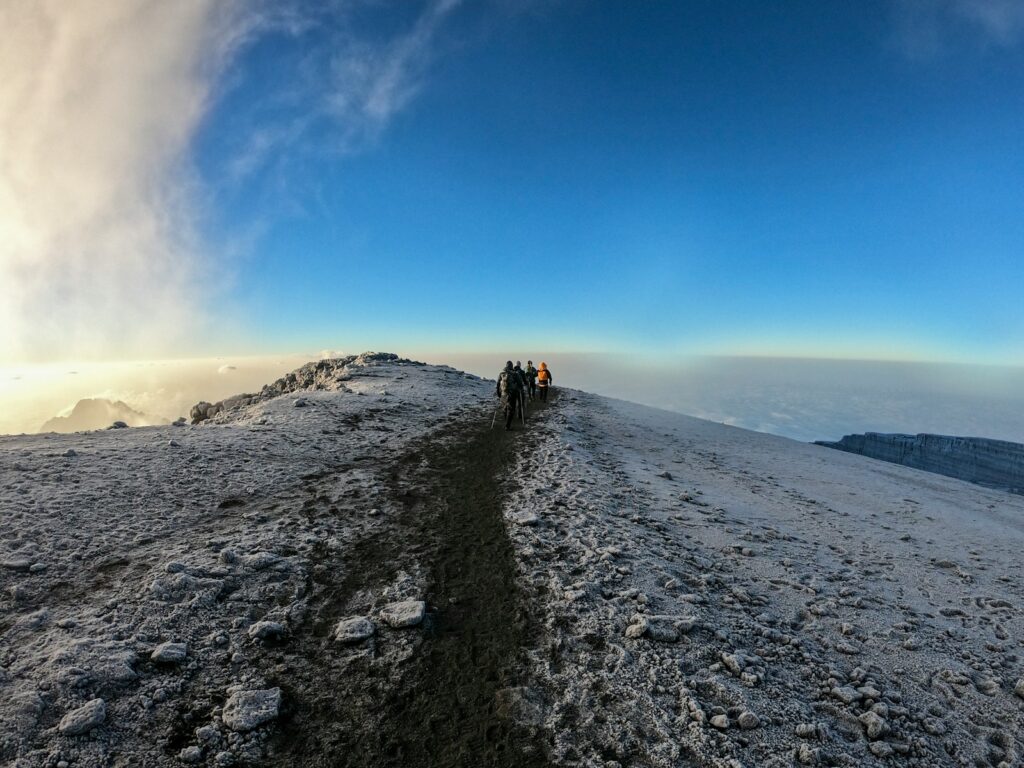
Geological Origins and Formation
Kilimanjaro’s history begins nearly a million years ago when powerful volcanic activity along the East African Rift created the massive stratovolcano. The mountain consists of three volcanic cones: Kibo, Mawenzi, and Shira. Shira, the oldest of the three, is believed to have collapsed approximately 500,000 years ago, forming a vast plateau. Mawenzi, with its rugged peaks, was shaped by further volcanic activity, while Kibo, the youngest and highest cone, remains dormant, though occasional geothermal activity suggests that deep beneath the surface, the mountain is still alive. Kibo’s last major eruption occurred around 360,000 years ago, leaving behind the dramatic crater that now houses Uhuru Peak, the highest point in Africa.
Over millennia, glacial activity carved Kilimanjaro’s upper slopes, creating the stunning ice formations that have long defined its summit. However, climate change has caused these glaciers to retreat at an alarming rate, with some experts predicting their complete disappearance within the coming decades.

Local Legends and Cultural Significance
Long before European explorers set foot on Kilimanjaro, the mountain held deep cultural and spiritual significance for the local Chagga people. For generations, the Chagga and neighboring Maasai communities developed myths and legends about the towering peak. Many believed that the summit was the dwelling place of spirits or gods, and climbing too high was considered dangerous and forbidden. Some legends spoke of a great chief or deity residing at the top, guarding the icy crown of the mountain.
The Chagga, who settled on Kilimanjaro’s fertile lower slopes, became skilled farmers, cultivating crops such as bananas and coffee. They developed advanced irrigation systems that allowed them to thrive in the region. Over time, trade routes emerged, connecting the Chagga to the Swahili coast, where they exchanged goods such as iron, livestock, and agricultural products.
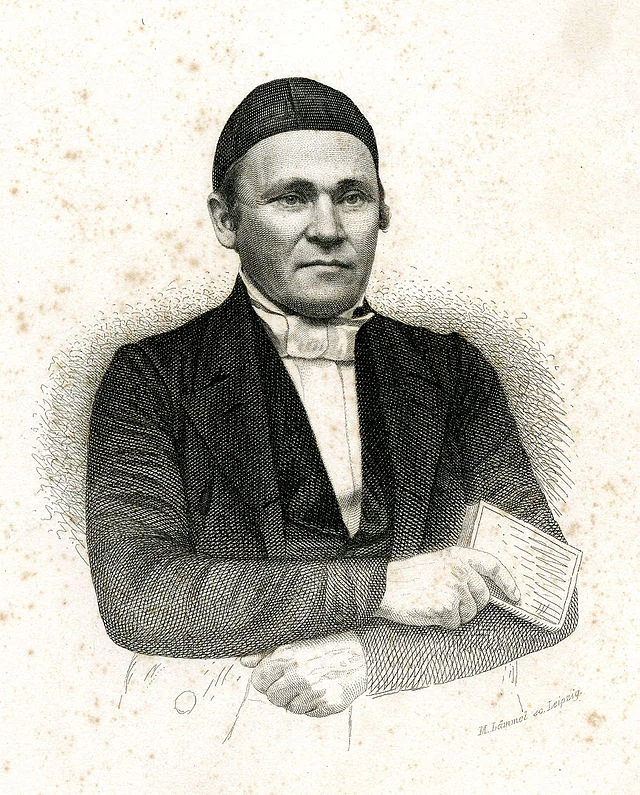
The First European Encounters
Despite Kilimanjaro’s massive presence, its existence was largely unknown to the outside world until the 19th century. The first recorded mention of the mountain by a European came from Johann Ludwig Krapf, a German missionary, in 1848. Krapf, guided by local communities, reported seeing a snow-capped peak near the equator—an observation that was initially dismissed as impossible by European geographers. At the time, the idea of snow existing in tropical Africa seemed absurd to many in Europe.
Several explorers attempted to verify Krapf’s claim, but it was not until 1861 that German geographer Baron Karl Klaus von der Decken and British geologist Richard Thornton made the first documented attempt to climb the mountain. They reached an altitude of about 2,500 meters (8,200 feet) before harsh weather forced them to turn back.
The most significant breakthrough came in 1889 when German geographer Hans Meyer, along with Austrian mountaineer Ludwig Purtscheller and a Chagga guide named Yohanas Kinyala Lauwo, successfully reached the summit of Kibo. Their expedition faced numerous challenges, including extreme cold, altitude sickness, and logistical difficulties. They had to make multiple attempts before finally reaching the peak, which Meyer named “Kaiser Wilhelm Spitze” in honor of the German emperor at the time. After Tanzania gained independence in 1961, the peak was renamed Uhuru Peak, meaning “Freedom Peak” in Swahili.

Colonial and Post-Colonial Influence
During the late 19th and early 20th centuries, Kilimanjaro fell under German colonial rule as part of German East Africa. After World War I, the region became a British mandate, forming part of Tanganyika. Under colonial rule, Kilimanjaro gained prominence as a symbol of exploration and adventure, attracting European mountaineers and researchers.
Following Tanganyika’s independence in 1961 and its union with Zanzibar to form Tanzania in 1964, Kilimanjaro became a powerful national symbol. The newly independent nation saw the mountain as a representation of unity, strength, and the hopes of the African people. Tanzania’s first president, Julius Nyerere, spoke of Kilimanjaro as a beacon of African freedom and progress.
Kilimanjaro National Park and Modern Tourism
In 1973, the Tanzanian government established Kilimanjaro National Park to protect the mountain’s unique ecosystem. Recognizing its global significance, UNESCO designated the park as a World Heritage Site in 1987.
Today, Mount Kilimanjaro is one of the most sought-after trekking destinations in the world. Each year, thousands of climbers attempt to reach Uhuru Peak, drawn by the challenge and the breathtaking beauty of the mountain. Various routes, such as the Machame, Marangu, and Lemosho routes, offer different experiences, ranging from easier paths with hut accommodations to more scenic but challenging trails.
Tourism has become a crucial part of the local economy, providing livelihoods for thousands of guides, porters, and conservation workers. Efforts to promote sustainable tourism aim to balance economic benefits with environmental conservation, ensuring that Kilimanjaro remains a natural wonder for future generations.
Kilimanjaro’s Enduring Legacy
Mount Kilimanjaro history continues to inspire adventurers, scientists, and cultural enthusiasts. Its towering silhouette against the African sky has been the subject of literature, art, and countless personal journeys. The mountain has also served as a stark reminder of the impacts of climate change, with scientists closely monitoring its receding glaciers as an indicator of global warming.
From its volcanic birth to its role in indigenous folklore, early exploration, and modern tourism, Kilimanjaro’s history is a testament to both natural wonder and human perseverance. Whether viewed as a geological marvel, a cultural icon, or a climbing challenge, Kilimanjaro remains one of the most legendary mountains in the world.
Recent Posts



